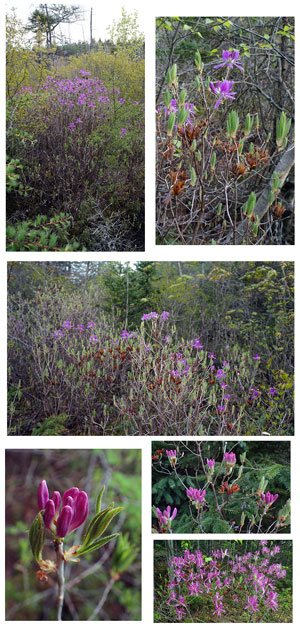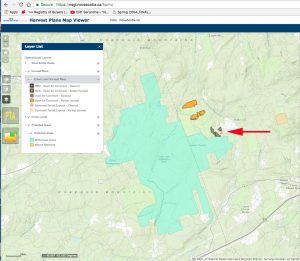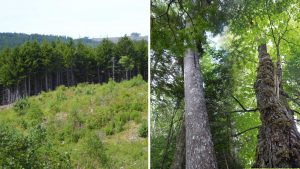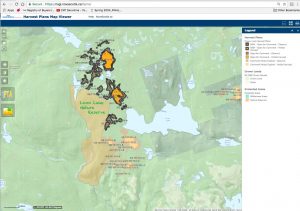“Whatever happened to the resolution by the Annapolis County Council?”
Good question.
——————————————————–
Thx, CR
twentyten domain was triggered too early. This is usually an indicator for some code in the plugin or theme running too early. Translations should be loaded at the init action or later. Please see Debugging in WordPress for more information. (This message was added in version 6.7.0.) in /home/versico/public_html/nsforestnotes/wp-includes/functions.php on line 6131“Whatever happened to the resolution by the Annapolis County Council?”
Good question.
——————————————————–
Thx, CR
 On Being Asked, Whence Is the Flower?
On Being Asked, Whence Is the Flower?
In May, when sea-winds pierced our solitudes,
I found the fresh Rhodora in the woods,
Spreading its leafless blooms in a damp nook,
To please the desert and the sluggish brook.
The purple petals fallen in the pool
Made the black water with their beauty gay;
Here might the red-bird come his plumes to cool,
And court the flower that cheapens his array.
Rhodora! if the sages ask thee why
This charm is wasted on the earth and sky,
Tell them, dear, that, if eyes were made for seeing,
Then beauty is its own excuse for Being;
Why thou wert there, O rival of the rose!
I never thought to ask; I never knew;
But in my simple ignorance suppose
The self-same power that brought me there, brought you.
–The Rhodora by Ralph Waldo Emerson, 1834
Continue reading
UPDATE (June 3, 2017) I missed this just pre-election Letters and Editorials item in the CH May 30, 2017: an Op-ed by Dale Smith (“The environment shell game“) in which he expresses skepticism about the environmental commitments made by the three major parties during the election campaign.
About the commitment in the Liberal platform “to appoint an independent expert to review our forestry practices to ensure we strike the right balance” he says:
Is the expectation that the proposed independent expert will rule upon and perhaps set aside the opinion and will of Nova Scotians as conveyed through the most extensive resources consultation and review process ever undertaken in Nova Scotia?
And who might be selected as an independent expert? Should he or she be a highly-credentialled forester? If so, and based on past experience, the effective outcome most likely would be carefully crafted recommendations advanced by a wily fox determined to ensure continued access to the henhouse, all in the name of balance.
Continue reading

Source Forest Harvest Allocation Maps 24 May 2017;
red arrow inserted to highlight blocks near the Gully Lake Wilderness Area for which clearcuts were proposed initially.
(Click on image to enlarge it.)
On Friday May 26, this explanation was sent out to subscribers to notices from the Harvest Plant Map Viewer: Continue reading
A modelling study shows that Protected Areas increase carbon storage, clearcuts reduce carbon storage

Decisions about cutting or not cutting and about how to cut affect carbon storage on our forested landscape.
If the existing and proposed protected areas were managed for forestry they would become a carbon source for the next 130 years for both maximum yield and forestry management with environmental considerations scenarios.
I was particularly struck by the profound sense of sadness conveyed in the voices of two people who conveyed their comments in telephone messages.
Below are transcripts from those messages.
 On CBC Mainstreet yesterday afternoon, CBC host Bob Murphy interviewed Raymond Plourde (Wilderness Coordinator for the Ecology Action Centre) and Karen Beazley (Professor in the School of Resource and Environmental Studies at Dalhousie University) about the effects of clearcutting close to protected areas, citing recent concern about clearcuts close to the Gully Lake Wilderness Area (GLWA).
On CBC Mainstreet yesterday afternoon, CBC host Bob Murphy interviewed Raymond Plourde (Wilderness Coordinator for the Ecology Action Centre) and Karen Beazley (Professor in the School of Resource and Environmental Studies at Dalhousie University) about the effects of clearcutting close to protected areas, citing recent concern about clearcuts close to the Gully Lake Wilderness Area (GLWA).
Following is a rough transcript from the CBC audio file, for the record. Continue reading
DNR staff changed the plan for all three blocks, labelled PI173495 A, B and C, May 24 from proposed clear cuts to proposed partial cuts. DNR did admit earlier this month that they were in talks with the Department of Environment about policies regarding forest harvests near protected spaces.
So…will NSDNR also back away from the proposed cuts by Loon lake Nature Reserve, a much smaller area and therefore much more vulnerable to destructive activities on its borders?
Thanks for your vigilance Jonathan Riley.

Forest Harvest Allocation Map accessed May 24, 2017 showing proposed cuts near Loon Lake Nature Reserve.
Click on image for larger version.
Also today I received notice about the next set of proposed harvests and a friend asked if I had looked at it, telling me that a lot of cutting, mostly clearcuts, is proposed near the Loon Lake Nature Reserve in Guysborough Co. So I had a look at it, and indeed it’s “unbelievable but true” (see map).
Continue reading

Source Forest Harvest Allocation Maps 24 May 2017;
red arrow inserted to highlight cuts proposed near the Gully Lake Wilderness Area.
(Click on image to enlarge it.)
Posts of proposed cuts continue to be posted on the Forest Harvest Allocation Maps at 2-3 week intervals, the last being on May 11.
A cut proposed near the 3,810 ha Gully Lake Wilderness Area that protects significant upland hardwood forest caught the attention and the ire of Chris Miller, a national conservation biologist with Canadian Parks and Wilderness Society (CPAWS), as reported by Jonathan Riley in the Truro Daily News for May 23, 2017):
Continue reading